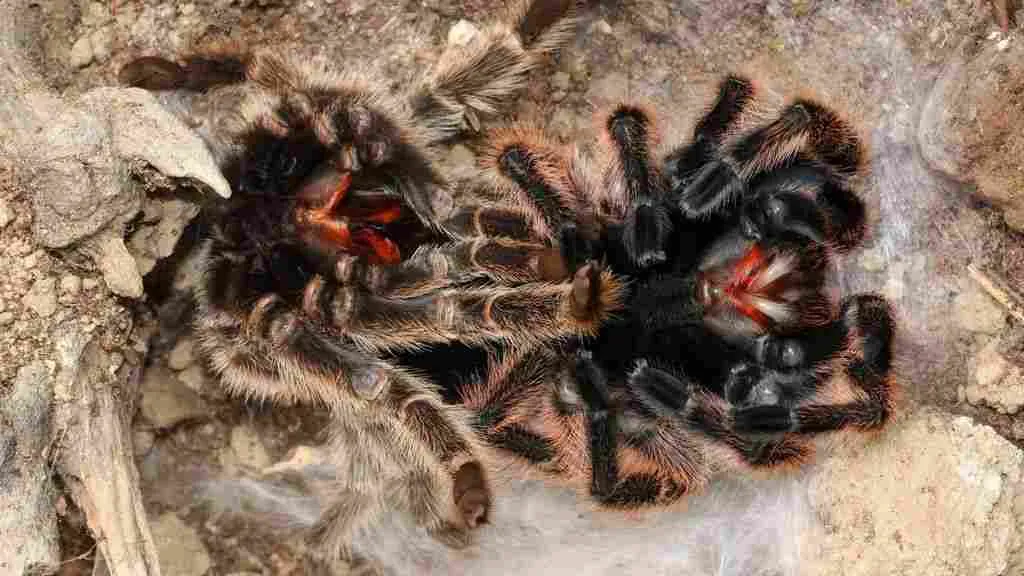Why is My Baby Tarantula Not Eating?
The sight of a baby tarantula refusing food can be a cause for concern, especially for new owners. These fascinating creatures, despite their imposing appearance, are quite delicate in their early stages. Understanding the potential reasons behind a baby tarantula’s loss of appetite is crucial for ensuring its health and well-being. Several factors can contribute to this, ranging from environmental conditions to the natural molting process. This guide will explore the top 5 reasons why your baby tarantula might not be eating, providing you with the knowledge to identify and address these issues effectively. By understanding these key aspects of tarantula care, you can provide your pet with the best possible chance to thrive.
Temperature and Humidity Issues
One of the most common reasons for a baby tarantula’s lack of appetite is improper environmental conditions. Tarantulas are ectothermic, meaning they rely on external sources to regulate their body temperature. Temperature and humidity play a crucial role in their metabolism and overall health. If the enclosure is too cold or too dry, the tarantula’s metabolism slows down, reducing its need for food. Conversely, extreme heat or humidity can also lead to stress and refusal to eat. Maintaining the correct temperature and humidity levels is, therefore, vital for ensuring your tarantula’s well-being and encouraging it to eat regularly.
Ideal Temperature Range for Baby Tarantulas
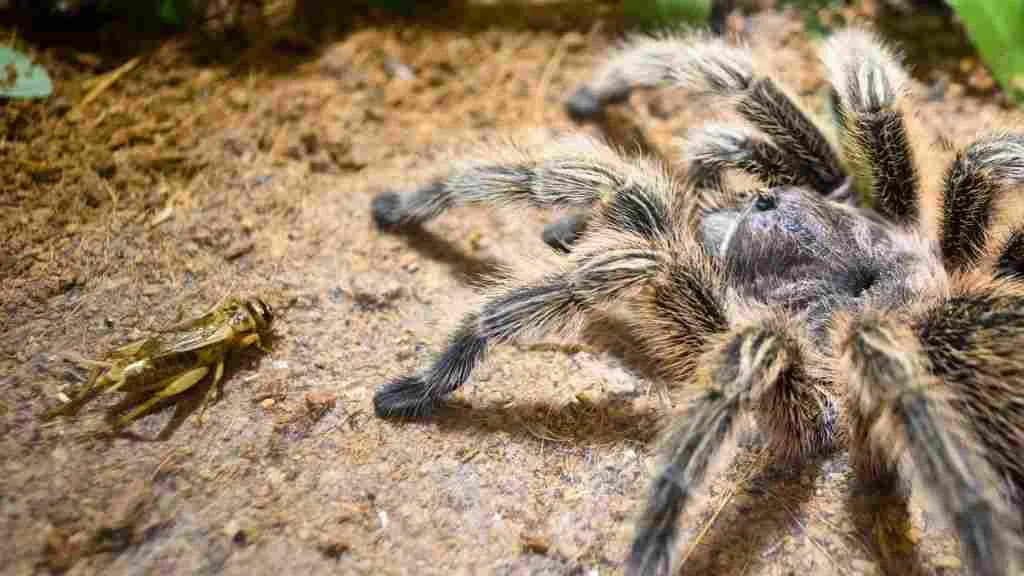
Baby tarantulas thrive within a specific temperature range. Generally, a temperature between 75°F and 80°F (24°C and 27°C) is considered ideal. Use a reliable thermometer to monitor the enclosure’s temperature regularly. Avoid placing the enclosure in direct sunlight or near heat sources, as this can cause the temperature to fluctuate dramatically. If the temperature is too low, consider using a heat mat or a low-wattage heat lamp, ensuring that these heat sources are regulated with a thermostat to prevent overheating. Regular temperature checks are essential for maintaining a healthy environment and encouraging your baby tarantula to eat.
Maintaining Proper Humidity Levels
Humidity is equally important as temperature. Most baby tarantulas require a humidity level between 60% and 80%. The exact level will depend on the species, so research the specific needs of your tarantula. You can measure humidity using a hygrometer. To maintain humidity, mist the enclosure with dechlorinated water every few days, allowing the substrate to dampen but not become waterlogged. Provide a shallow water dish with fresh water at all times. Proper ventilation is also critical to prevent mold growth; ensure there is adequate airflow in the enclosure. Consistent monitoring and adjustments will ensure your baby tarantula has the right environment.
Molting Cycle and Appetite Loss
Molting is a natural process where tarantulas shed their exoskeleton to grow. During this period, tarantulas often lose their appetite. Molting can be a stressful process, and eating during this time is not only unnecessary but can also interfere with the molting itself. Understanding the molting cycle can help you avoid unnecessary worry and ensure your tarantula is getting the care it needs. Watch for signs that your tarantula is preparing to molt and adjust your feeding schedule accordingly. This natural process is a sign of healthy growth, so patience is key.
Signs Your Tarantula is About to Molt
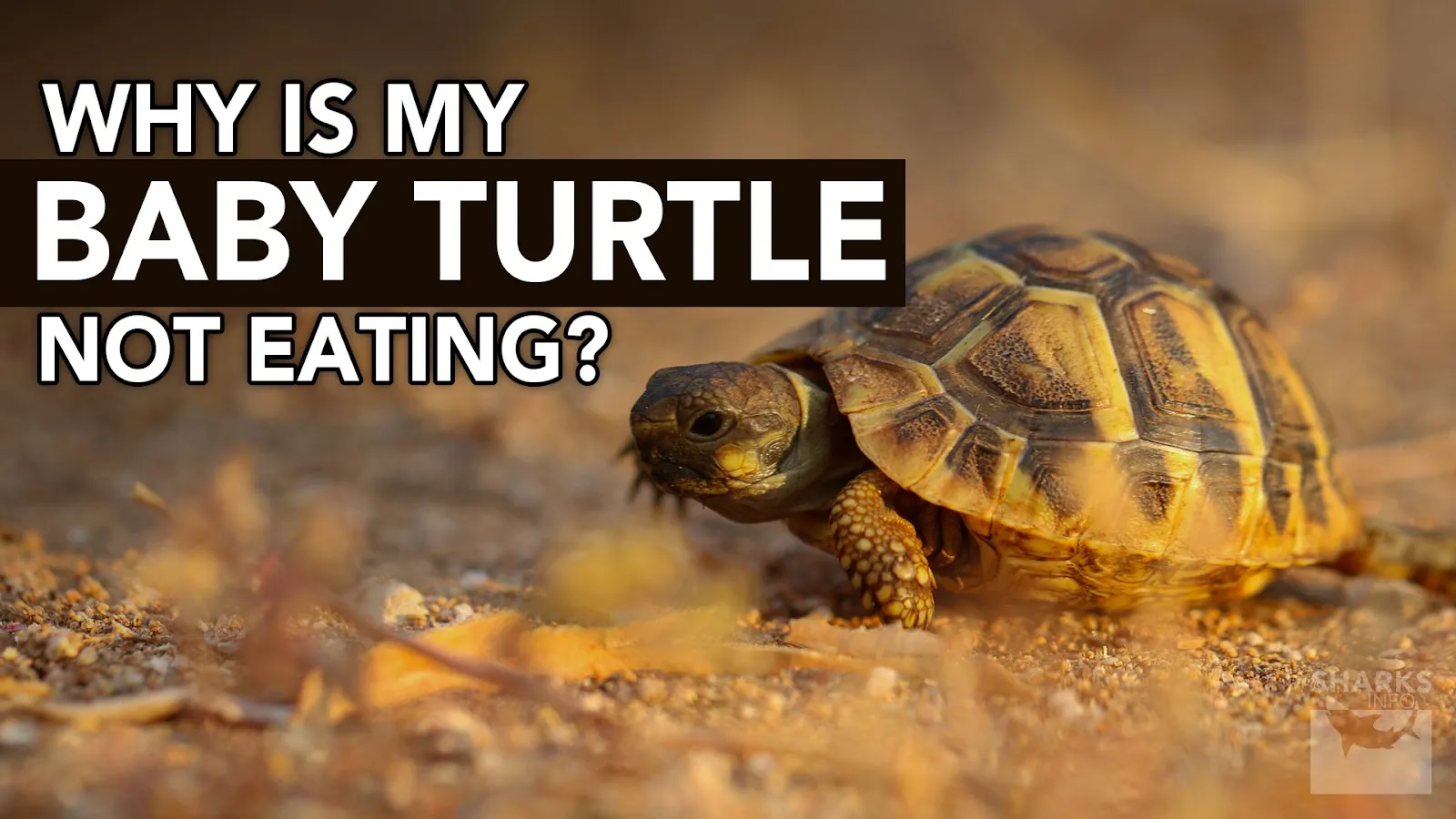
Several signs can indicate that your baby tarantula is preparing to molt. One of the most obvious is a change in appearance. The tarantula’s abdomen may appear darker, swollen, or shiny. They may also become less active and spend more time hiding. The tarantula might stop eating altogether for several weeks leading up to the molt. They might also start to create a web mat to lie on during the process. It is crucial to avoid disturbing your tarantula during molting. Provide a stress-free environment, and do not attempt to feed them until they have fully hardened their new exoskeleton.
Post-Molting Feeding Habits
After molting, a tarantula’s appetite will typically return. However, it is essential to wait a few days before offering food. The tarantula’s new exoskeleton will be soft and vulnerable immediately after molting. Waiting allows the exoskeleton to harden fully. When you do offer food, start with a small prey item. Observe your tarantula’s behavior to ensure it is ready to eat. It may take some time for the tarantula to regain its full appetite after molting. Provide a variety of food to encourage eating.
Prey Size and Feeding Frequency
Another critical factor affecting a baby tarantula’s appetite is the size and frequency of feedings. Offering the wrong size prey or feeding too often can lead to a lack of interest in food or even health problems. It’s essential to strike a balance between providing enough nutrition and not overwhelming your tarantula. Careful consideration of prey size and feeding schedule will ensure that your baby tarantula receives optimal nutrition, promoting healthy growth and development. Adjusting the feeding plan based on the tarantula’s age and species is also crucial.
Choosing the Right Size Prey for Baby Tarantulas
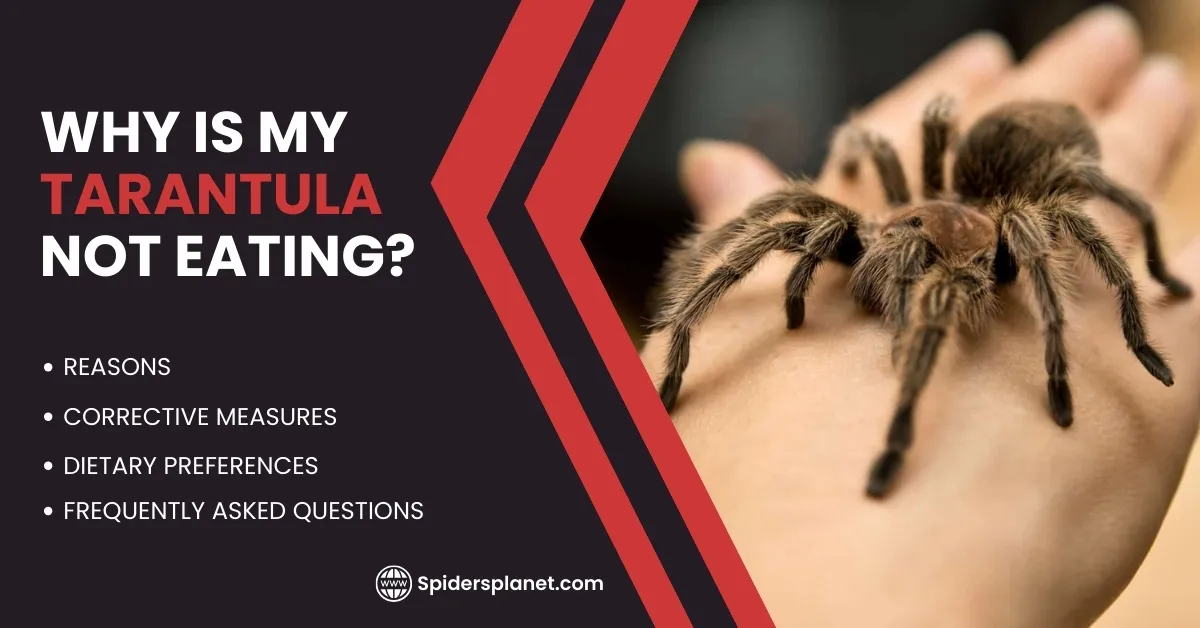
The size of the prey should be appropriate for the size of your baby tarantula. A general rule is to offer prey that is no larger than the tarantula’s body size. For very small spiderlings, pinhead crickets or flightless fruit flies are often suitable. As the tarantula grows, you can gradually increase the size of the prey. Always remove any uneaten prey within 24 hours to prevent stress or injury to the tarantula. Observe your tarantula’s feeding behavior to ensure it can handle the size of the prey. Using appropriately sized prey is critical for their health and well-being.
Feeding Frequency for Baby Tarantulas
The feeding frequency depends on the tarantula’s age and growth rate. Baby tarantulas typically need to be fed more frequently than adults. Young spiderlings might need to be fed two to three times a week. As they grow, you can gradually reduce the feeding frequency to once or twice a week. It is essential to monitor the tarantula’s abdomen; a healthy tarantula should have a plump abdomen, which indicates it is well-fed. Adjust the feeding schedule based on your tarantula’s activity level and appetite. Overfeeding can lead to obesity, while underfeeding can stunt growth. Find the right balance for your pet.
Stress and Environmental Factors
Stress can significantly impact a baby tarantula’s appetite. Tarantulas are sensitive creatures, and various environmental factors can cause stress, leading them to refuse food. Identifying and minimizing stressors is crucial for maintaining your tarantula’s health and encouraging it to eat. Providing a secure and stable environment will significantly contribute to your tarantula’s well-being. Observe your tarantula’s behavior and surroundings to ensure it is living in optimal conditions. This will reduce the likelihood of stress-related issues.
Creating a Stress-Free Environment
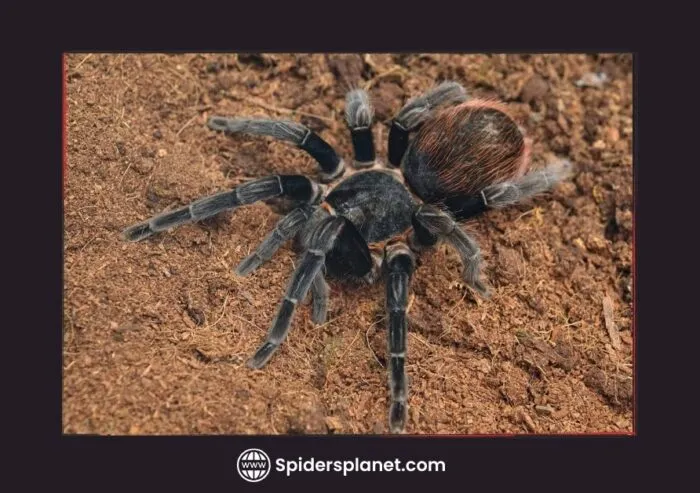
A stress-free environment is essential for a healthy tarantula. The enclosure should be appropriately sized, providing enough space for the tarantula to move around and feel secure. Use a substrate that allows the tarantula to burrow, which provides a sense of security. Avoid handling your tarantula unless necessary, as handling can be a significant source of stress. Minimize vibrations near the enclosure, such as loud noises or movement. Provide plenty of hiding places, such as cork bark or artificial plants, to allow the tarantula to retreat and feel safe. A well-designed enclosure significantly reduces stress.
Common Environmental Stressors
Several environmental factors can cause stress in tarantulas. Sudden changes in temperature or humidity can be stressful. Excessive handling or disturbance can also contribute to stress. The presence of predators or other pets can make a tarantula feel unsafe. Poor ventilation, leading to a build-up of ammonia, can be another stressor. Loud noises and bright lights can also disrupt the tarantula’s natural behavior and feeding patterns. Regularly inspect the enclosure for potential stressors and make necessary adjustments to ensure the tarantula’s well-being. Providing a stable, secure environment minimizes stress-related appetite loss.
Illness and Health Concerns
In some cases, a baby tarantula’s refusal to eat can be a sign of an underlying health issue. While tarantulas are generally hardy creatures, they can be susceptible to various illnesses and conditions. Recognizing the signs of illness and seeking appropriate veterinary care is essential for ensuring your pet’s health. If you suspect your tarantula is sick, it’s crucial to consult a veterinarian experienced in exotic animals as soon as possible. Early detection and treatment can improve the chances of a positive outcome.
Recognizing Signs of Illness
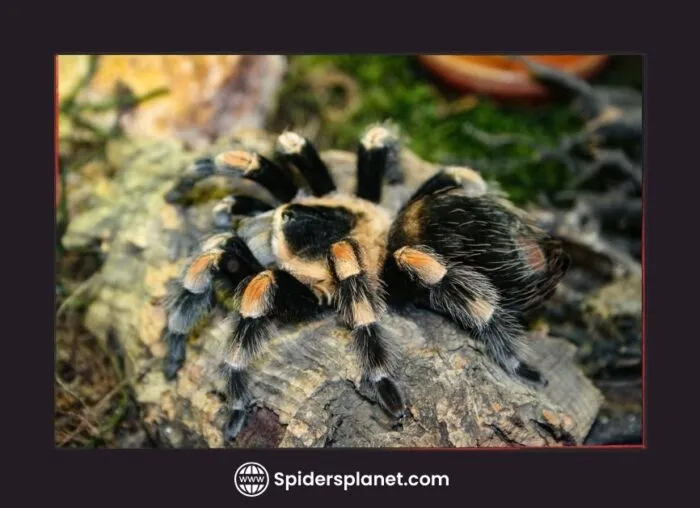
Besides a loss of appetite, other signs can indicate that your tarantula is sick. Lethargy or inactivity, even outside of the molting period, is a potential symptom. Unusual changes in appearance, such as discoloration or lesions on the exoskeleton, can also be cause for concern. Difficulty moving or uncoordinated movements may indicate a health problem. Additionally, the presence of parasites or other pests in the enclosure can be a sign of an issue. Any unusual behavior or physical changes should prompt a closer inspection of the tarantula and its environment.
When to Consult a Veterinarian
If you observe multiple signs of illness or if your tarantula’s condition worsens, it is time to consult a veterinarian. A veterinarian experienced in exotic animals can diagnose the problem and recommend appropriate treatment. Do not attempt to self-medicate your tarantula, as this can be harmful. Be prepared to provide the vet with information about your tarantula’s environment, diet, and any recent changes in behavior. Early veterinary intervention can make a significant difference in the outcome of the illness, so seeking professional help is crucial when in doubt. Your vet can provide the best care for your baby tarantula.
In conclusion, a baby tarantula’s refusal to eat can be attributed to several factors, ranging from environmental conditions to molting cycles and health concerns. By understanding the potential causes and implementing appropriate care practices, you can ensure your pet’s well-being and encourage healthy eating habits. Monitoring temperature and humidity levels, providing appropriately sized prey, minimizing stress, and recognizing the signs of illness are all crucial steps in keeping your baby tarantula happy and healthy. With careful observation and proactive care, you can enjoy the fascinating world of tarantula keeping and provide your pet with a thriving life.
